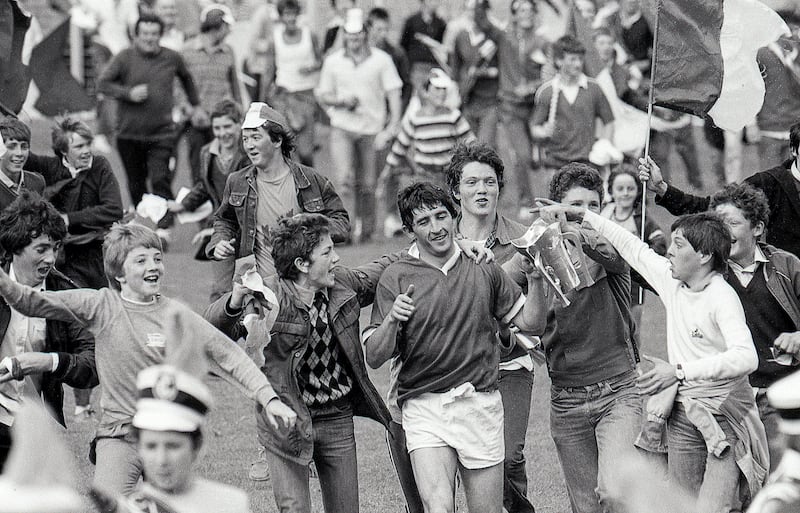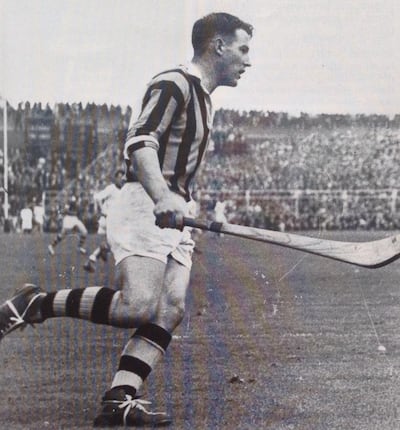In an Irish Examiner interview with the Bishop of Cork and Ross last week there was a phrase referring to the GAA that jumped off the page.
The piece was about plans for the Annual Eucharistic Procession, on the Feast of Corpus Christi, a tradition that was initiated by local business people in the 1920s as part of a wider attempt to heal Civil War divisions.
The Church embraced the idea enthusiastically. At its height, long after its origins were forgotten, the Eucharistic Procession used to attract crowds of up to 25,000, bringing the city centre to a standstill.
Over the years the numbers taking part naturally dropped, in step with the decline of Mass-going congregations everywhere, but the secularisation of Irish life didn’t kill the tradition and it continued for the committed.
This year the procession clashes with the Munster hurling final and, according to Bishop Fintan Gavin, it was put to them that they should consider evasive action. In the event, they elected to stand their ground.
“The feast of Corpus Christi falls on the day itself so we couldn’t move the day,” he said. “We thought about bringing the time of the procession back to 1.30pm, but we could have all sorts of groups saying, ‘You’re kowtowing to the GAA,’ so we are staying with the plan.”
It was the right decision. Why should they move? The interesting part, though, was the language. The suggestion of a contested space: Sunday prime time. Through the decades the relationship between the GAA and the Catholic Church was always more complex than it was commonly portrayed, but if one party in the relationship was deferential, it was the GAA. Among the powerful institutions in Irish society, a hierarchy was observed.

In some of its practices, Cork GAA was a case in point. For decades no club matches were fixed for Good Friday. The explanation that gained currency was that this was a local bylaw; what’s more, if any clubs dared to go rogue and play a challenge match on that day the whispered threat was that they wouldn’t be covered by the GAA’s insurance.
A new regime in Páirc Uí Chaoimh discovered, however, that none of this was true. Not playing matches on Good Friday had been a mark of respect to the most solemn day in the liturgical calendar, but it was custom and practice rather than anything enshrined in the rules. That barrier was quietly removed and Good Friday took its place on the fixtures list.
Follow the roots of the relationship between the GAA and the Catholic Church and it sprays in different directions. In the 1880s, when the GAA was a fledgling organisation, it flew into direct conflict with the Catholic Church, who believed, with good reason, that the GAA had been infiltrated by the Irish Republican Brotherhood.
But the GAA also made the decision very early that clubs should take their boundaries from Catholic parishes, purely as an act of administrative piggybacking. As Mike Cronin, Mark Duncan and Paul Rouse pointed out in The GAA – A People’s History, this decision “was a matter of convenience, not one of religious devotion”.
What it fostered, though, was a symbiotic relationship. Many GAA clubs were named after Catholic saints. It was widely seen as desirable to have a member of the local clergy on the club executive, or at least hold the ceremonial role of club president.
A priest that could train a team was a gift from God. A new GAA pitch would always be blessed and at the annual club dinner dance not a bite would be swallowed until the parish priest said grace.
At club meetings, remembrance for a deceased member would be marked with a Catholic prayer rather than a moment’s silence. For generations, the odds that somebody in the room might be from another faith, or from no faith at all, didn’t make anyone stop and think. Now? The practice continues by force of habit.
All of this was bound up with the status of the Catholic Church in wider Irish society. The GAA had no desire to distance itself from that. In soccer or rugby or golf that closeness didn’t exist to nearly the same degree; in the GAA, it was embraced, heartily. The GAA and the Catholic Church shared Sundays as their flagship day. Mass and the match were places of congregation, and to different degrees, worship.
Growing up in east Cork in the 1980s, the day of a Munster championship game always started with first mass in Midleton, where the church would be packed with match-goers. Walking down the aisle after communion you were scanning to see John Fenton and Pat Hartnett and Denis Mulcahy and Kevin Hennessy and Ger Fitzgerald, Cork players who were starting the day with the same ritual as most everybody else. That was the way of it.

In 1979, when Kilkenny won the All-Ireland, RTÉ’s Mick Dunne landed in the winners’ dressing room, not long after the trophy presentation, and amidst the bedlam he was astonished to find Fan Larkin washed and dressed.
“How did you get togged out so quickly?” said Mick.
“Ah, I have to go to Mass Mick,” said Fan.
And it was true. Fan was a faithful church goer but he had slept it out that morning. There was a teatime Mass in one of the churches downtown. All-Ireland Sunday was like every other Sunday: Mass and match.
Over time, as society changed, the symbolism of the relationship between the GAA and the Catholic Church was toned down. The custom of big matches being started by a Catholic bishop throwing in the ball petered out during the 1960s; when Bishop Lucey started the 1976 Munster football final the practice was virtually extinct.
By then the Catholic hymn, Faith of Our Fathers, was no longer sung on All-Ireland final day. The incumbent Archbishop of Cashel and of Emly is still a patron of the GAA, and is a guest of honour on All-Ireland final day, but until 2016 he used to present the trophy to the captain of the All-Ireland-winning minor teams and then that practice stopped too.
The venue for this year’s Munster hurling final is up for grabs. Páirc Uí Chaoimh will make a strong bid. Once upon a time, the prospect of a big match in the Páirc on the day of the Eucharistic Procession would have been a logistical impossibility. The match wouldn’t have happened.
Now, the crowds can be accommodated. By degrees of separation, it is not a contested space.











